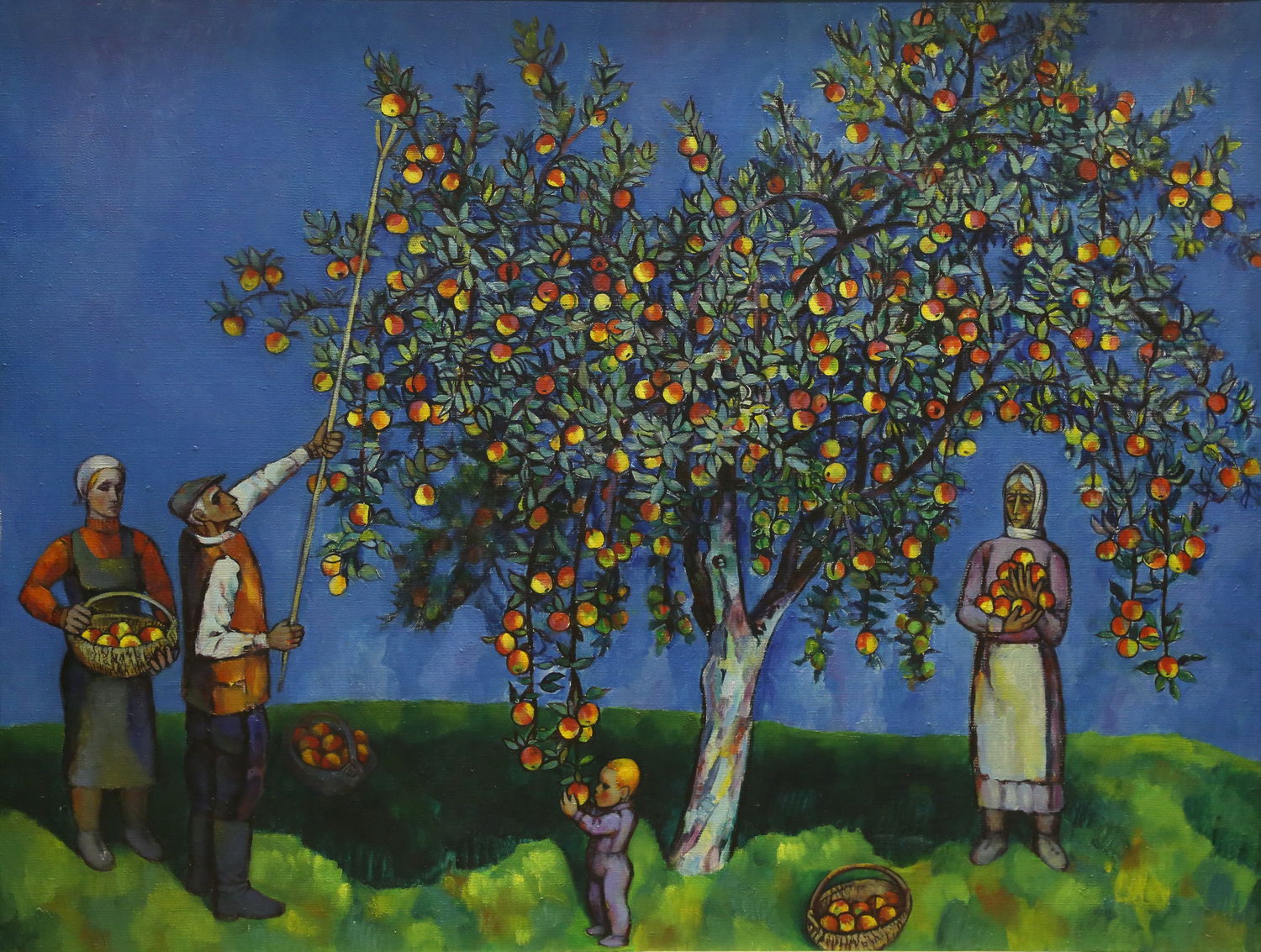These are not only still lifes, but also landscapes, and even portraits. The exhibition contains several sections: ‘Flowers and Fruits’, ‘The Garden of Eden’, ‘Dialogue’, ‘Life on the Table’ and ‘In the Style of Cezanne’.
The works of peaceful creative labor displayed at the exhibition invite us to ‘stop and look around’, to peer into the fruit of the land. They return to us the belief that beauty and harmony lie at the heart of the universe. No wonder an unknown icon painter of the 18th century put an apple into the hands of the Infant Christ, sitting in the arms of the Mother of God. This apple is the fruit of the Garden of Eden from the tree of good and evil. Jesus Christ is called the New Adam in the Christian tradition, since sin and death entered human nature through Adam. Jesus (the God-man) saved the human race from original sin. The theme of the Garden of Eden is continued at the exhibition by artists depicting the flowering of gardens – the time when the land turns into the scented Garden of Eden for several days.
Without the land and its fruit, like a mythical Antaeus, there is nowhere for man to get strength. Man and nature follow each other in the general life cycle of the universe: seed – growth – flowering – fruiting – withering – and again rebirth. The personification of the life-giving nature, its generosity and openness, hospitality of Belarus is the painting ‘Portrait of an Unknown Woman with a Basket of Fruits’ of the 1830s by Jan Chrucki.
Scenes of abundance in the family apple picking in the paintings by Mikhail Rogalevich, Aleksandr Kishchenko have sacred nature, as well as the solemn presentation of apples and pears in Vladimir Ugrinovich’s ceramic cycle ‘Memories of Summer’, or in Valentina Krivosheeva’s ‘Autumn Still Life’. Grown and gathered by man, they engage into a kind of dialogue with him. Meanings are being changed on the artist’s intention. For example, an apple from the father’s garden in the works by Aleksandr Mozolyov, Mikhail Rogalevich, Valentin Volkov and Gavriil Vashchenko serves both as a sign of the summer freedom and carelessness of a teenage boy on vacation, and as a talisman for a young soldier who has arrived on leave, and as a symbol of his mother’s tragic thoughts who lost her son, and an attribute of a girl in anticipation of her betrothed.
Belarusian artists see endless motives for creativity and experiment in the fruits of the land such as apples, pears, cherries, plums and pumpkins. These motives are in the cycles of bright still lifes by Yadviga Rozdzyalovskaya, Svetlana Katkova and Valeryana Zholtak in the section ‘Life on the Table’. There is a chain of works in combination with flower bouquets and without them – from realistic Larisa Zhuravovich and Gennady Shutov, and formal ‘in the style of Cezanne’ to metaphysical ‘shards of the Garden of Eden’ in the philosophical works by Aleksandr Kishchenko and Sergey Timokhov.
Curators – Nadezhda Usova, leading research associate, and Anastasia Rubashnaya, senior associate
Designed by Diana Aliyeva
The exhibition
will continue until March 5, 2023





